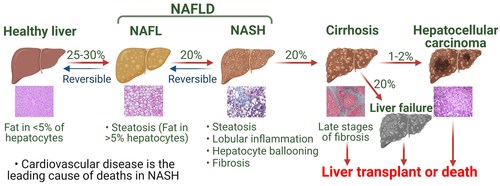Pathogenesis of Non-alcoholic Fatty Liver Disease: Chinese Medical Journal Review Highlights Underlying Mechanisms and Therapeutic Approaches
30 Sep 2022
New article sheds light on the importance of HNF4α, a hormone receptor, in the pathogenesis of non-alcoholic fatty liver disease
BEIJING, Sept. 30, 2022 /PRNewswire/ -- Non-alcoholic fatty liver disease (NAFLD) is a chronic liver disease, marked by steatosis (fat buildup) in at least 5% of the liver cells. A subtype of NAFLD—non-alcoholic steatohepatitis (NASH), may progress to cirrhosis, hepatocellular carcinoma (HCC), and liver failure. Hence, understanding the pathogenesis of NAFLD can enable effective NAFLD management in high-risk individuals.
Continue Reading

Preview
Source: PRNewswire
New Chinese Medical Journal article explores the importance of HNF4α, a hormone receptor, in the pathogenesis of non-alcoholic fatty liver disease (NAFLD)
The regulation of normal liver function depends on hepatocyte nuclear factor 4α (HNF4α)—a hormone receptor. HNF4α dysregulation is associated with various diseases, including NAFLD and HCC. However, the mechanisms leading to NAFLD are unclear.
Recently, a research team including Dr. Xiaoli Pan and Dr. Yanqiao Zhang from the Northeast Ohio Medical University, reviewed existing research on the pathogenesis and treatment of NAFLD, in an article published in volume 135, issue 10 of Chinese Medical Journal, on May 20, 2022. They explored the role of HNF4α in NAFLD development, and its potential as a therapeutic target for NAFLD.
"Owing to the complexity of NAFLD pathogenesis, we proposed a multi-hit hypothesis, in which various factors simultaneously induce NAFLD in genetically predisposed patients", said Dr. Pan, while discussing the study.
First, they noted that impaired fatty acid oxidation, insulin resistance, and genetic factors lead to fatty acid accumulation in the liver, resulting in NAFLD. Furthermore, in 20% of patients, NAFLD progresses into NASH, primarily due to inflammation. Factors such as lipotoxicity, altered gut microbiota, and extracellular vesicles drive this inflammation, contributing to NAFLD.
Normally, HNF4α inhibits p53, which in turn reduces liver toxicity, and regulates several lipid metabolism pathways.
As a result, HNF4α suppression leads to hepatic apoptosis, inflammation, oxidative stress, and fibrinogenesis, which are associated with NAFLD.
These findings suggest that HNF4α has an important role in NAFLD development and high potential as a therapeutic target.
"New findings suggest that delivering small activating RNA into the liver increased HNF4α levels in lab rats, resulting in reduced fat accumulation. We also found that the delivery of HNF4α into liver cells prevents lipid accumulation and liver fibrinogenesis. Together, these can lead to the development of NAFLD treatment strategies", adds Dr. Pan.
These insights will definitely contribute to the development of effective treatments for NAFLD!
Reference
Title of original paper: Hepatocyte nuclear factor 4α in the pathogenesis of non-alcoholic fatty liver disease Journal: Chinese Medical Journal
DOI: https://doi.org/10.1097/CM9.0000000000002092
Media contact:
Peifang Wei
[email protected]
86-10-51322170
SOURCE Chinese Medical Journal
For more details,please visit the original website
The content of the article does not represent any opinions of Synapse and its affiliated companies. If there is any copyright infringement or error, please contact us, and we will deal with it within 24 hours.
Organizations
Indications
Drugs
Chat with Hiro
Hot reports
Get started for free today!
Accelerate Strategic R&D decision making with Synapse, PatSnap’s AI-powered Connected Innovation Intelligence Platform Built for Life Sciences Professionals.
Start your data trial now!
Synapse data is also accessible to external entities via APIs or data packages. Empower better decisions with the latest in pharmaceutical intelligence.




